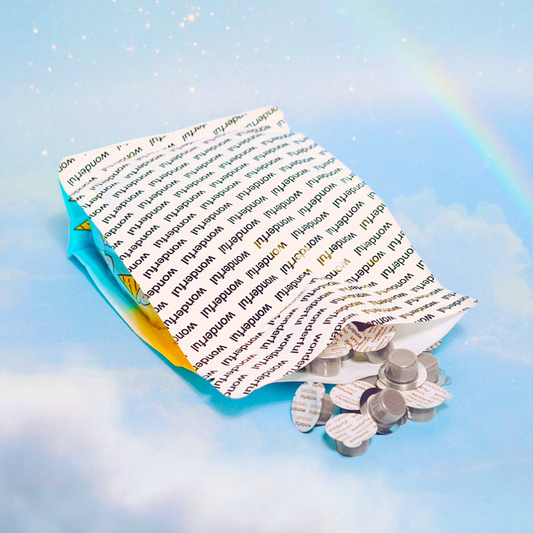Fluoride Varnish - Why is it better
David Epstein 6 minutes readOur children are the apple of our eyes and as parents we go to any extent to provide the best for them. How about adding an extra layer of protection to their cute set of pearly whites! If you have ever given a serious thought on this, it is time for you to take your child for a fluoride varnish application session.
One must realize that oral health is an essential factor to maintain overall health. Oral health comes from healthy gums and teeth. Hence, we strive to inculcate good oral hygiene habits in our children right in the childhood. The first dental visit of your child should be planned around his/her first birthday. During this visit, your dentist will recommend you for fluoride varnish treatment. The frequency of application depends on how likely your child may develop dental decay. So, in children who are more prone to develop decay should go for at least 3 to 4 applications annually.
Fluoride is a naturally occurring mineral, present in our water sources It is the best cavity fighter and help in keeping the teeth healthy and free from dental decay.
Let’s see what the history says— Fluoride gained popularity in the 1960s; it was first developed and marketed in the form of sodium fluoride with the name of Duraphat. The Fluoride varnishes prolong the contact between fluoride and the first layer of the tooth(enamel). Modern research aims at introducing newer materials consisting of fluoride to restore the decayed tooth back to its original form.
What is Fluoride Varnish?
Fluoride varnish is a dental treatment helps in preventing tooth decay, lowers the speed of progress and prevent it from getting worse. The main constituent of fluoride varnish is fluoride itself, a mineral that fortifies tooth enamel (outer layer of teeth).
One must bear in mind that fluoride varnish applications cannot completely avoid cavities. Fluoride varnish treatments can be considered as adjuncts to good oral hygiene habits like-
- Brushing at least twice daily with a fluoridated toothpaste.
- Flossing daily.
- Reduce frequency of snacks per day in between the meals.
- Reduce carbohydrates.
- Try rinsing after very meal to lower the acidity(pH) of the mouth.
- Eat food that strengthens your tooth enamel and bone density.
- Regular dental checkups
How does fluoride varnish act?
When fluoride reaches the oral cavity, it gets absorbed in the enamel. The enamel is primarily composed of ‘hydroxyapatite’ crystals. Through the action of decay-causing bacteria, the enamel begins to lose hydroxyapatite. This causes the development of demineralized enamel. The fluoride ions repair the demineralized enamel by forming fluorapatite thereby replenishing the lost calcium and phosphorous. This process is known as re-mineralization.
It doesn’t stop here— when fluoride is present during re-mineralization; the minerals deposited into the tooth enamel bond even more strongly than before, thereby, preventing the dissolution during the next de-mineralization phase.
Thus, fluoride helps to stop the decay process and prevent future tooth decay.
Why fluoride varnish when I use fluoridated toothpaste for my child daily?
Though both the forms are effective means of providing fluoride to the teeth, there is a difference in the concentration of fluoride present in each form. Fluoride varnish has a higher concentration of fluoride ions and they stay longer on teeth thereby providing better protection against cavities. Apart from that, fluoride varnish is an in-office treatment procedure wherein only professionally qualified dental/medical provider perform the procedure of varnish application on teeth.
Is Fluoride Varnish Safe?
Fluoride varnish is absolutely safe as it is applied by trained professional like your dentists and doctors all over the world. The quantity used is quite less and there is no chance for it to be swallowed. It has the quality of hardening soon after it is applied. Moreover, it is brushed off after keeping it on the teeth for about 4 to 12 hours.
What are the steps in Fluoride Varnish application?
It is an extremely simple and painless procedure. Generally, it is a matter of few minutes only, provided the child cooperates throughout the entire procedure. The child is asked to keep the mouth wide open. For small children, the parents are asked to carry them on their laps to facilitate easy application of fluoride varnish even if the child cries. Fluoride varnish is applied gently in cleaned surfaces of teeth with the help of a small brush called the applicator. Care is taken to spread the varnish on the top and the sides of the teeth without touching the gums, cheek or tongue. Within a span of few seconds the varnish hardens. It can never be licked off from the teeth.
What are the things that need to be taken care of after the application?
General guidelines on how to care for your child's teeth after fluoride varnish application will be given to you by the dentist. Few of them are listed below-
- You can allow your child to eat or drink soon after varnish application. Ensure to give only soft foods and avoid giving hot food or beverages for at least the day of application.
- Your dentist may ask you to brush or floss the child’s teeth only the next morning. This is because the fluoride needs to stay on enamel for a time span of at least 4 to 12 hours for maximum benefits.
Recent research shows that fluoride varnish can be quite beneficial and an effective means of keeping dental cavities at bay for everyone irrespective of their age. Now, that’s some REAL good news! Besides, fluoride varnish has emerged as a boon for those who are extremely prone to develop dental cavities due to problems like dryness of mouth. Dryness of mouth, or xerostomia as it is called medically, can occur as a side effect to few medicines like antihypertensives or medical conditions like diabetes. Those who wear braces can also think of getting a fluoride varnish application done so that their teeth remain protected even during the orthodontic treatment as maintenance of oral hygiene becomes quite tough while wearing braces.
So, with all the above given information, when have you planned to get fluoride varnish application done for your teeth?










